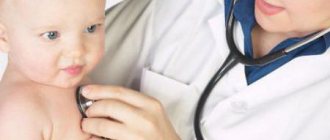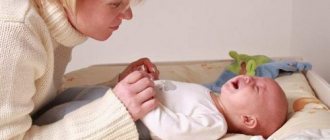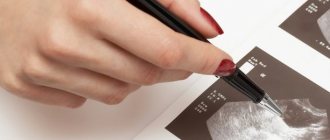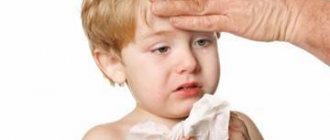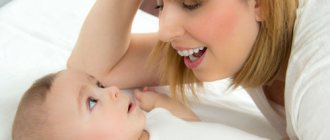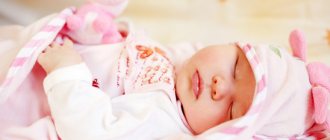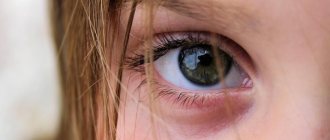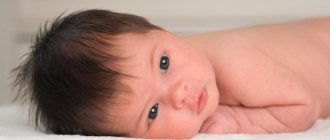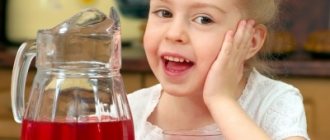Types of cough
Cough acts as a protective mechanism for the body and occurs due to an attack by infectious microorganisms in the bronchial tract. Through cough bursts, the tracheal and bronchial channels are cleared of mucus, in which dust particles and bacteria accumulate. The culprits of cough syndrome and wheezing during bronchitis are various pathogens. Here are the types of cough depending on the type of pathogen:
Power sign:
- Mild coughing;
- Ragged cough.
Period of coughing attacks:
- From 10 to 14 days, acute, occurs due to an infectious form of the disease;
- From 14 to 30 days, protracted in nature, appears in the chronic stage;
- From 30 to 40 days, long term, pathogens are viruses;
- From 60 days, prolonged duration, the culprits are considered to be: chronic diseases, allergic pathogens, tobacco smoking, chemical production, unfavorable environmental factors.
Characteristic features:
- Dry cough, no sputum, pain in the chest and throat;
- Wet coughing, sputum comes out abundantly, with the help of it germs and dust particles are removed.
Sound factor:
- Loud, abrupt;
- Hoarse;
- Quiet;
- Barely audible;
- Sonorous;
- Short term.
Safe Reasons
The baby eats well, is gaining weight, does not show anxiety, has not walked in drafts, and has wheezing. This is possible because a newborn baby’s airways are not yet fully developed and they are still quite narrow. This can cause wheezing during feeding or when the baby sleeps.
The nasal canals in infants are quite narrow, so dust quickly accumulates in the nasopharynx. The main reason for this is dry air. It’s a paradox, but caring and loving parents are most often to blame for this. Taking care that the child does not get sick, they mistakenly believe that closing the windows tightly, not ventilating and heating the room where the child is, is the right way to protect him from hypothermia and colds.
But pediatricians recommend not to forget about regular 10-minute ventilation of the room in which the newborn is mainly located, as well as the need to periodically humidify the air with special humidifiers or at least place some container with cold water in the room or hang wet towels on the heating radiator. According to Dr. E. Komarovsky, the optimal conditions for a newborn can be considered an air temperature in the room of 18-22 ° C and a humidity of 40-60%;
Dust accumulation
Mothers should definitely do regular wet cleaning of their newborn’s room to prevent dust from accumulating, and then they will not be bothered by wheezing in the baby. It is also advisable not to get carried away with soft toys, since they tend to accumulate dust.
Unclean spout
Since the nose is a filter for the air we breathe, mucus periodically accumulates in the nasal passage, which, when dried, forms dry crusts, which provokes wheezing when breathing in infants. This also happens in adults, only infants cannot yet blow their nose and clear their nose on their own. Therefore, you need to remove crusts and mucus from the baby’s nose every day.
At the pharmacy you need to buy special moisturizing drops or regular saline solution, drop a drop into each nasal passage of the child and then carefully remove the “cause of inconvenience” with a cotton swab.
If the baby is always in a lying position, is not picked up or played with, then there is a risk of “stagnation” and swelling in the lungs and respiratory tract, which leads to even more wheezing. This phenomenon is often observed among orphanage children, since nannies and teachers do not have enough hands and time to pay attention to all the children.
Contaminated air
Wheezing and the appearance of mucus in an infant can be caused by polluted air, which contains cigarette smoke or exhaust fumes, so babies should be carefully protected from such exposure.
For all of the above-described wheezing, medical and medicinal intervention is not required, but it is necessary to monitor the child’s general well-being. With a normal body temperature of up to 37 degrees, good appetite and restful sleep, there is no reason to worry, but during your next scheduled visit to the clinic, be sure to pay this “little detail” to the pediatrician’s attention so that he can rule out any diseases.
What does wheezing mean when exhaling?
When exhaling, wheezing is heard in the bronchi - this is due to a pathological change in the respiratory function of the bronchial tree. For the normal functioning of the inhaled air into the bronchial canal, no interference is allowed. If an inflammatory process in the respiratory tract suddenly begins, large quantities of sputum accumulate in the alveoli. The body cannot remove mucus due to painful illness; it blocks the respiratory gap, creates obstructions and provokes wheezing. Wheezing is caused not only by colds, but also by foreign bodies of the tracheal and bronchial tract, and cardiac pathologies.
What is wheezing? If wheezing in the thoracic region does not disappear when the body position changes, or when the person lies down, then the suspicion falls on pneumonia. Pulmonary wheezing can occur during tuberculosis. This microbial infection caused by the Koch bacillus can be contracted on the street, in transport and at home.
Peculiarities
Children breathe completely differently than adults. Firstly, babies breathe more superficially and shallowly. The volume of air inhaled will increase as the child grows; in babies it is very small. Secondly, it is more frequent, because the volume of air is still small.
The airways in children are narrower and have a certain deficiency of elastic tissue.
This often leads to disruption of the excretory function of the bronchi. When you have a cold or a viral infection, active immune processes begin in the nasopharynx, larynx, and bronchi aimed at fighting the invading virus. Mucus is produced, the task of which is to help the body cope with the disease, “bind” and immobilize foreign “guests”, and stop their progress.
Due to the narrowness and inelasticity of the airways, the outflow of mucus can be difficult. Children born prematurely most often experience respiratory problems in childhood. Due to the weakness of the entire nervous system in general and the respiratory system in particular, they have a significantly higher risk of developing serious pathologies - bronchitis, pneumonia.
Babies breathe mainly through their “belly”, that is, at an early age, due to the high position of the diaphragm, abdominal breathing predominates.
At 4 years old, chest breathing begins to develop. By age 10, most girls are breathing from the chest, and most boys are breathing diaphragmatically (belly). A child’s oxygen needs are much higher than the needs of an adult, because babies actively grow, move, and significantly more transformations and changes occur in their bodies. To provide all organs and systems with oxygen, the baby needs to breathe more often and more actively; for this, there should be no pathological changes in his bronchi, trachea and lungs.
Any reason, even a seemingly insignificant one (stuffy nose, sore throat, sore throat), can complicate a child’s breathing. During illness, it is not so much the abundance of bronchial mucus that is dangerous, but its ability to quickly thicken. If, with a stuffy nose, the baby breathes through his mouth at night, then with a high degree of probability, the next day the mucus will begin to thicken and dry out.
Not only the disease, but also the quality of the air he breathes can disrupt a child’s external breathing. If the climate in the apartment is too hot and dry, if parents turn on the heater in the children's bedroom, then there will be many times more problems with breathing. Too humid air will also not benefit the baby.
Oxygen deficiency in children develops faster than in adults, and this does not necessarily require the presence of some serious illness.
Sometimes a little swelling or slight stenosis is enough, and now the little one develops hypoxia. Absolutely all parts of the children's respiratory system have significant differences from the adult one. This explains why children under 10 years of age most often suffer from respiratory illnesses. After 10 years, the incidence declines, with the exception of chronic pathologies.
Major breathing problems in children are accompanied by several symptoms that are understandable to every parent:
- the child’s breathing has become harsh and noisy;
- the baby is breathing heavily - inhalations or exhalations are given with visible difficulty;
- the breathing frequency has changed - the child began to breathe less often or more often;
- wheezing appeared.
The reasons for such changes may vary. And only a doctor in tandem with a laboratory diagnostics specialist can establish the true ones. We will try to tell you in general terms what reasons most often underlie changes in breathing in a child.
Type of wheezing
Wheezing begins after coughing during bronchitis, this is due to the occurrence of symptomatic signs of a respiratory infectious disease. The hoarse sound is individual for each patient, the main difference is the sonority. It depends on the complexity of the inflammatory process and personal anatomical features of the structure of the bronchopulmonary tract. There are two types of wheezing: dry and wet. Wheezing in the bronchi can occur without coughing due to cardiac pathologies and foreign particles.
Dry wheezing
Dry hoarseness during respiratory function appears due to microbial bacilli that affect the mucous membrane of the bronchi and narrow the lumen. Dry wheezing occurs with the following types of diseases:
- Fibrous obstruction of bronchioles;
- Bronchospastic syndrome;
- Pulmonary fibrosis;
- Chronic inflammatory disease of the lower respiratory tract (asthma);
- Spasmodic bronchitis.
The sounds of this type of wheezing are muffled, abrupt, you can hear a whistle or hum. The whistling sound of the respiratory function indicates a reduction in the lumen of the alveoli. A whistling sound when exhaling indicates obstructive bronchitis, the causative agent of the disease is allergens. The humming occurs due to the collision of air flows with the bronchial partitions. Blockage of the alveoli with viscous mucus leads to dry wheezing.
Wet wheezing
Wet wheezing during respiratory function appears because the bronchial channels are clogged with mucus of a viscous consistency. Mucus appears during a pathological process of the bronchopulmonary tract. The air flow passing through the viscous sputum forms bubbles in it. When they burst, a noise similar to hissing is heard. When inhaling, wheezing is clearly audible; they make a whistling and creaking sound. Breathing noise effects can be divided into the following types:
- Fine bubble moist wheezing. Occurs during fibrous obstruction of bronchioles, pulmonary infarction, bronchial pneumonia. The sound background is hissing;
- Medium bubbly wet sounds. The sound background resembles bursting bubbles or splashing water. Respiratory function of this type occurs in the following diseases: pulmonary fibrosis, pulmonary bronchiectasis;
- Large bubbling wet wheezing. Breathing is caused by a noisy sound that can be heard at a long distance. This type of wheezing occurs due to advanced edema of the pulmonary organ.
When exhaling, wheezing is associated with a deviation in the respiratory section, namely, pneumonia develops. They are clearly audible in the focal zone of lung damage.
How to hear and recognize wheezing
There are several types:
- Wheezing - appears with swelling of the bronchi, spasms can also be observed.
- Humming – accompanied by thick viscous sputum, predicts an obstructive process in the lungs.
- Wet - can occur due to a large amount of fluid, observed with tuberculosis, pneumonia, abscess.
- Dull, silent - indicates possible pulmonary edema and heart failure.
Cough egg: the most effective recipes
Causes of wheezing when exhaling
Wheezing in the bronchi is caused by many reasons. The main factor for wheezing of any kind is divided into 2 groups:
- Pulmonary variety - appears when there is a viral or bacterial infection of the respiratory system.
- Extrapulmonary variety - appears due to other diseases not related to the respiratory department. Heart pathologies cause wheezing and whistling sounds.
Atypical pneumonia and the chronic stage of bronchitis cause wheezing in the bronchi. Such illnesses occur without high fever, are dangerous to health, and require immediate medical intervention.
Pathologies that cause wheezing
Diseases that cause hoarse breathing occur in the respiratory region are less likely to have other pathologies. Bronchitis of various forms can be accompanied by wet or dry wheezing. Pathologies of moist rales occur in the following diseases:
- Acute viral infection caused by influenza virus;
- Acute respiratory viral infections;
- Pulmonary edema;
- Heart abnormalities (defect);
- Endemic typhus;
- Pneumonia;
- Bronchiectasis;
- Malignant tumors;
- Impaired kidney function;
- Blockage of the pulmonary artery;
- Pulmonary obstruction of the chronic stage;
Wet noises after exhalation are characteristic of bronchitis and asthma. When the weakness has not affected the pulmonary tract, the wheezing is quiet, slightly moist, cough syndrome without temperature indicators. Dry hoarseness has a number of symptoms:
- Inflammation of the larynx;
- Inflammation of the mucous membrane of the pharynx;
- Fibrous obstruction of bronchioles;
- Chronic bronchitis;
- Cardiac syndrome of decompensated myocardial dysfunction;
- Benign tumors.
Dry wheezing appears during shortness of breath if foreign particles have entered the bronchopulmonary tract and clogged the windpipe.
Diagnosis of pathologies including wheezing
Hoarseness during respiratory function causes various types of diseases. To establish a diagnosis, not only hoarseness, but also other symptoms are considered. By listening to the patient to identify noises in the respiratory organs, a probable situation is diagnosed. To identify the causative agent of audible noises during breathing, it is necessary to conduct a detailed examination. Necessary:
- Donate blood for analysis;
- Mucus analysis;
- X-ray of the lungs.
A comprehensive examination of the respiratory system will be required, prescribed by a doctor. The doctor takes into account symptomatic signs:
- Cough attacks.
- Suffocation.
- Temperature indicators.
- Patient's health status.
- Blue color of the skin in the area of the nasal and lip cavities.
Combined symptomatic signs and laboratory tests will help the doctor determine the causative agent of respiratory function, accompanied by wheezing, and prescribe a qualified therapeutic course.
How to treat wheezing in the bronchi
How to get rid of wheezing? It is necessary to establish the primary source of the pathology. Having identified it, it is easier for the doctor to eliminate the main culprit of the problem. Wellness therapy includes 3 areas. How to treat wheezing in the bronchi when exhaling? The doctor includes in therapy: treatment with medications, physiotherapy, folk remedies. Wheezing in the lungs has serious consequences and danger to the patient’s life and requires a special approach and treatment. For atypical pneumonia, it is difficult to select antibacterial agents that are sensitive to the irritant. Doctors use a number of medications from different classes together.
Drug treatment
It is not recommended to delay therapy to treat wheezing of the alveoli; you should immediately consult a doctor to avoid complications with purulent discharge. To treat bronchitis with this symptom, doctors use antibiotics if the infection is bacterial. For a dry, hoarse cough due to bronchitis, expectorant medications are used to thin the mucus and remove it from the canals, as well as antitussive medications to relieve cough attacks. In case of wet cough during bronchitis, treatment with antitussive medications is canceled. Bronchitis is accompanied not only by a cough or wheezing breathing, but by viruses and microbes that cause the disease. To treat bronchitis with a hoarse cough, doctors use complex therapy, individually for each patient:
- In obstructive bronchitis, to eliminate spasmodic attacks, a bronchospasmolytic drug group is used. Used during inhalations;
- If bronchiolitis is acute, therapy includes inhalation procedures using drugs from the corticosteroid group. This drug group prevents clogging of the alveoli;
- When the disease recurs, antiviral, mucolytic and corticosteroid drugs are used. The chronic stage of the disease is observed and treated by a pulmonologist.
For bronchitis with hoarseness in breathing, it is good to use inhalations using folk remedies (herbal infusions, baking soda).
Physiotherapy
Doctors include physiotherapeutic procedures in the wellness treatment of bronchitis. They are used in combination with medications. The course of procedures is aimed at improving blood flow and removing mucus from the bronchi. The following sessions are scheduled:
- Electrotherapy method using electric current and administering drugs through the skin;
- Electrotherapy using a high-frequency electromagnetic field.
- The medical course includes massage sessions, respiratory exercises, and salt caves.
ethnoscience
Hoarseness of the respiratory tract due to bronchitis can be easily cured with folk remedies. Doctors recommend using:
- Aloe juice with the addition of honey and lemon peels. The mixture is infused for 7 days, consumed for 1.5 months, 1 tablespoon.
- Milk with the addition of honey, soda, raisins. Use hot.
- Let's infuse it.
- Infusion of viburnum with the addition of honey, drink as a warm compote.
It is effective to use black radish in folk medicine, add honey, lemon, and make an infusion.
Bronchospasm
Bronchospasm is an acute condition characterized by a narrowing of the lumen of the bronchi due to spastic contraction of the smooth muscles located in their walls. Bronchospasm is one of the causes of shortness of breath (or suffocation). It is manifested by noisy breathing with difficulty in inhaling and most often occurs with obstructive and chronic bronchitis.
Bronchospasm plays a certain role in the pathogenesis of the allergic form of bronchitis, but less important than edema. Infectious-allergic agents, acting on the cholinergic structures of the respiratory tract, cause reflex-spastic muscle contraction, which leads to bronchospasm.
Important! Bronchospasm is a dangerous condition that requires immediate emergency medical attention.
Bronchodilators are used to relieve bronchospasm. These include:
- β2-adrenergic receptor agonists;
- M-anticholinergics;
- methylxanthines.
Bronchodilators are administered during inhalation using special devices - inhalers or nebulizers . Bronchospasm relieved by bronchodilators is called reversible airway obstruction. Situations where bronchodilators do not provide relief are called irreversible obstruction, in which case glucocorticosteroids are indicated.
Bronchial spasm
We treat wheezing in the lungs when exhaling in children
After healing, wheezing can be heard in the child’s bronchi. The reason for this is complications of bronchial disease. It is necessary to contact a pediatrician to prescribe a therapeutic course. As a rule, inhalation procedures and folk remedies are used in treatment.
Treatment of wheezing during exhalation with medications
- Therapy is individual for each child. The method of therapy depends on the culprit of the infectious irritant, and the following is prescribed:
- Antiviral drugs.
- Antibiotics with minimal side effects and a wide range of uses.
- Medicines from the expectorant and mucolytic group.
- Antitussive drugs.
For children, doctors prescribe liquid medicines: syrups, mixtures, solutions with herbal ingredients.
Traditional medicine to help children
Effectively use folk remedies for healing. They resort to folk “helpers” to get rid of residual effects. Here are some recommendations:
- Honey massage, rub until completely absorbed:
- Inflating balloons;
- Potato cakes are used as a compress.
During illness, it is recommended to drink a lot of liquid: herbal infusions, berry compotes, juices from freshly squeezed fruits, plain water without gases, tea with berry jam.
Herbal therapy
Use herbal therapy effectively. To use herbal infusions, you must consult a doctor, as the age of the child must be taken into account. Typically in demand: licorice root, oregano, St. John's wort, plantain and many others.
Hoarse breathing occurs due to various reasons. To eliminate symptoms, it is recommended to consult a doctor to avoid complications and dangerous pathologies. Competent therapy will cure coughing attacks and hoarse breathing in a minimal period. Take care of your health, strengthen yourself, strengthen your immune system and stay healthy.
